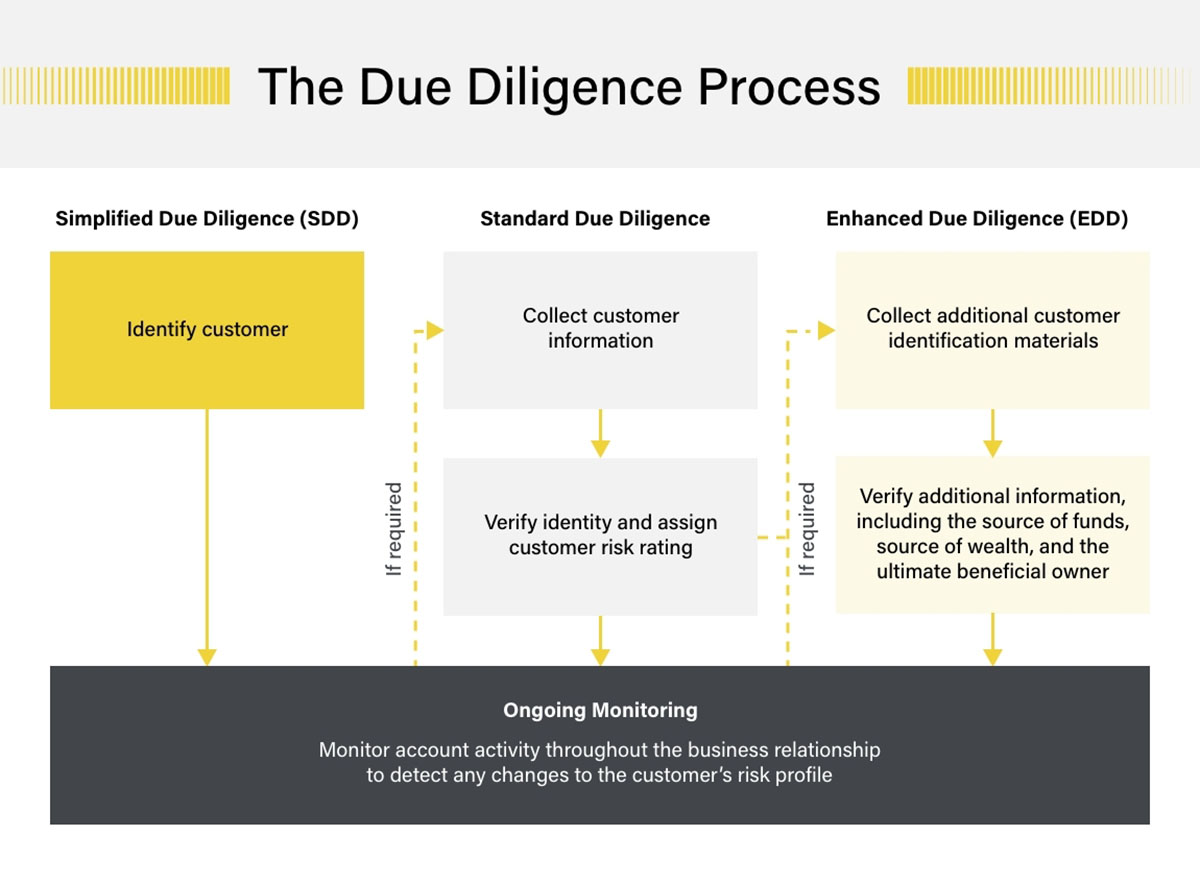

Finance
What Is Banking Resolution
Published: October 13, 2023
Learn all about banking resolution and how it plays a crucial role in the world of finance. Get insights into the process and importance of resolving financial issues in the banking industry.
(Many of the links in this article redirect to a specific reviewed product. Your purchase of these products through affiliate links helps to generate commission for LiveWell, at no extra cost. Learn more)
Table of Contents
Introduction
In the world of finance, the stability and resilience of the banking system are of paramount importance. However, there are occasions when a bank faces financial distress or even the risk of failure. In order to protect the interests of depositors, prevent widespread financial repercussions, and maintain the overall stability of the system, banking resolutions are implemented.
A banking resolution refers to a set of actions and measures taken by regulatory authorities and financial institutions to address the financial difficulties faced by a bank. The ultimate goal of a banking resolution is to restore the bank’s viability and ensure its smooth functioning, while minimizing the adverse impact on depositors, creditors, and the financial system as a whole.
This article will delve into the concept of banking resolution, exploring its definition, purpose, process, key players, legal framework, challenges, and case studies. By understanding the intricacies and complexities of banking resolutions, we can gain valuable insights into how these mechanisms contribute to the stability of the banking sector.
Definition of Banking Resolution
Banking resolution refers to the set of measures and actions taken by regulatory authorities and financial institutions to address the financial distress or potential failure of a bank. It encompasses a range of strategies and tools aimed at stabilizing the bank, protecting depositors’ interests, and preserving the overall stability of the financial system.
At its core, banking resolution involves formulating and executing strategies to address the unique challenges faced by a troubled bank. These challenges may include liquidity problems, solvency issues, inadequate risk management practices, or low capital ratios. A successful resolution aims to rehabilitate the bank and restore its operations to a sustainable and secure footing.
Banking resolutions are typically triggered when a bank’s financial condition deteriorates to a level where it poses a systemic risk or threatens the stability of the financial sector. These resolutions may be initiated by regulatory authorities, such as central banks or financial regulatory bodies, or in some cases, by the bank itself.
The nature and extent of a banking resolution can vary depending on the severity of the bank’s financial distress. In some instances, the resolution may involve restructuring the bank’s operations, implementing risk mitigation measures, injecting capital, or providing financial assistance. In more severe cases, it may necessitate the sale or closure of the bank.
It is important to note that banking resolution should not be confused with bank bailouts. While both involve addressing financial difficulties in the banking sector, bailouts refer to the use of public funds to support a struggling bank. Banking resolutions, on the other hand, aim to minimize the use of public resources and focus on internal restructuring and risk mitigation.
Overall, banking resolution plays a critical role in safeguarding the stability of the banking system, protecting depositors’ funds, and ensuring the continuity of essential financial services. By swiftly and effectively addressing financial distress in banks, resolutions help restore confidence in the financial system and maintain the overall health of the economy.
Purpose of Banking Resolution
The primary purpose of banking resolution is to address financial distress in banks and mitigate the potential risks it poses to the stability of the financial system. By taking prompt and decisive action, banking resolutions aim to achieve the following goals:
- Protect Depositors: One of the main purposes of banking resolutions is to safeguard the interests of depositors. Banks play a crucial role in holding and managing depositors’ funds, and any financial distress or failure could lead to the loss of these funds. Banking resolutions seek to ensure that depositors’ money is protected and that they have access to their funds even in times of financial turmoil.
- Preserve Financial Stability: The stability of the overall financial system is of utmost importance to prevent systemic risks and maintain economic stability. Banking resolutions are designed to minimize the contagion effects that can arise from a troubled bank and spread throughout the financial sector. By containing and resolving the issues faced by a troubled bank, resolutions help maintain the confidence of market participants, prevent panic, and preserve the stability of the financial system.
- Rehabilitate and Reestablish Viability: A key purpose of banking resolutions is to restore the viability of a troubled bank. This involves implementing measures to improve the bank’s financial condition, including capital injections, restructuring of operations, asset sales, or other means to enhance profitability and sustainability. The ultimate goal is to rehabilitate the bank and bring it back to a position where it can operate sustainably and fulfill its role in the economy.
- Minimize Disruptions to Financial Services: Banks provide crucial financial services to individuals, businesses, and the overall economy. A banking resolution aims to minimize disruptions to these essential services, ensuring that credit continues to flow, payments are processed, and the availability of banking services is maintained. This helps to prevent disruptions to economic activity and smooth functioning of financial markets.
- Limit the Use of Public Resources: Another purpose of banking resolution is to minimize the reliance on public resources, such as taxpayer funds, to address financial distress in banks. Resolutions aim to distribute the costs and losses incurred by a troubled bank among its shareholders, creditors, and other market participants, rather than burdening the public. This approach promotes accountability and ensures that public resources are used judiciously.
Overall, the purpose of banking resolution is to ensure the long-term stability and sustainability of the banking system, protect the interests of depositors, and minimize the potential negative impacts on the broader economy. By addressing financial distress in a timely and effective manner, banking resolutions play a vital role in maintaining confidence, trust, and resilience in the financial sector.
Process of Banking Resolution
The process of banking resolution involves a series of steps and actions taken to address the financial distress or potential failure of a bank. While the specific process may vary depending on the jurisdiction and the circumstances of the bank, there are some common elements involved in most banking resolutions. The following outlines the general process of banking resolution:
- Identification of Financial Distress: The first step in the process is the identification of a troubled bank facing financial distress. This can be identified through regular financial assessments conducted by regulatory authorities, external audits, or internal risk management processes.
- Assessment and Planning: Once the financial distress is identified, regulatory authorities, in coordination with relevant stakeholders, assess the extent and nature of the problems faced by the bank. This involves evaluating the bank’s financial condition, liquidity position, risk exposures, and potential impact on the wider financial system. Based on this assessment, a resolution plan is developed, outlining the strategies and measures to address the financial distress.
- Implementation of Measures: The resolution plan is put into action, involving a range of measures to stabilize the bank and improve its financial condition. These measures may include capital injections, asset sales, debt restructuring, management changes, or other initiatives aimed at enhancing the bank’s viability and sustainability.
- Protection of Depositors: A key aspect of banking resolution is to protect the interests of depositors. Measures are taken to ensure that depositors can access their funds and that their accounts are transferred to a stable banking institution if necessary. Deposit insurance schemes may also be activated to provide an additional layer of protection for depositors.
- Communication and Transparency: Throughout the resolution process, effective communication and transparency are crucial. The public, market participants, and other stakeholders need to be kept informed about the progress of the resolution, the reasons behind the decision-making, and the measures being implemented. This helps maintain confidence and trust in the banking system.
- Monitoring and Evaluation: After the initial measures are implemented, ongoing monitoring and evaluation take place to assess the effectiveness of the resolution process. Regulatory authorities continue to assess the bank’s financial health, risk management practices, and compliance with regulatory requirements. This ensures that the bank remains on a path of recovery and stability.
- Resolution Outcome: The ultimate goal of banking resolution is to restore the bank to a sustainable and viable state. Once the bank’s financial condition has improved and risks have been mitigated, the resolution process is deemed successful. The bank can resume its operations and contribute to the stability of the financial system.
The process of banking resolution requires close collaboration and coordination among regulatory authorities, financial institutions, government agencies, and other stakeholders. It is a complex and challenging process, involving careful planning, decision-making, and implementation, all with the aim of protecting depositors, preserving financial stability, and restoring the viability of the troubled bank.
Key Players Involved in Banking Resolution
Banking resolution involves the participation of various key players who play critical roles in addressing financial distress in a bank. These players collaborate and work together to ensure an effective resolution process. The following are the key players typically involved in banking resolution:
- Regulatory Authorities: Regulatory authorities, such as central banks, financial regulatory bodies, and government agencies, play a central role in banking resolution. They oversee and supervise the banking sector, identify troubled banks, assess their financial conditions, and formulate resolution plans. Regulatory authorities have the authority to implement necessary measures to stabilize the bank and protect the overall financial system.
- Bank Management and Board of Directors: The bank’s management team, including executive officers and board of directors, are responsible for implementing the resolution plan and executing the necessary measures. They work in close collaboration with regulatory authorities to address the financial distress, restructure the bank’s operations, and improve its financial condition.
- Depositors and Creditors: Depositors and creditors have a vested interest in banking resolution as their funds and financial assets are at stake. Depositors may be provided with additional protections through deposit insurance schemes or other mechanisms to safeguard their interests. Creditors, including other financial institutions and bondholders, may be involved in debt restructuring or recapitalization efforts, depending on the resolution plan.
- Government Support: In some cases, governments may provide support to the troubled bank during the resolution process. Government intervention may involve providing financial assistance, injecting capital, or facilitating mergers or acquisitions with healthier banks. Government support is aimed at minimizing the systemic risks and maintaining financial stability.
- Resolution Authorities and Special Resolution Regimes: Some jurisdictions have established specialized resolution authorities or frameworks specifically designed to handle banking resolutions. These entities have the expertise and legal powers to intervene in troubled banks, implement resolution strategies, and ensure the orderly resolution of failing banks. Examples include the Federal Deposit Insurance Corporation (FDIC) in the United States and the Banking Resolution Authority (BRA) in the United Kingdom.
- External Advisors and Consultants: External advisors and consultants, such as accounting firms, legal experts, and financial advisors, may be engaged to provide specialized expertise and advice during the resolution process. These experts contribute their insights on legal, financial, and operational matters, assisting in formulating and implementing effective resolutions strategies.
- Market Participants and Credit Rating Agencies: Market participants, including investors, analysts, and credit rating agencies, closely monitor banking resolutions. They assess the impact of the resolution on the bank’s creditworthiness, market perception, and the broader financial system. Their analysis and evaluations can influence market sentiment and the bank’s ability to recover and sustain its operations.
Effective collaboration and coordination among these key players are crucial for a successful banking resolution. Each player brings their unique expertise and perspective, working towards the common goal of stabilizing the troubled bank, protecting stakeholders’ interests, and preserving the overall stability of the financial system.
Legal Framework for Banking Resolution
Banking resolution operates within a legal framework that provides the necessary powers and authority to regulatory authorities and resolution entities. This legal framework aims to establish clear guidelines and procedures for handling financial distress in banks. It provides a robust framework for effective and orderly resolution processes. The following are key components of the legal framework for banking resolution:
- Special Resolution Regimes: Many countries have implemented special resolution regimes that provide a specific legal framework for managing banking resolutions. These regimes grant resolution authorities enhanced powers and tools to address financial distress, such as the ability to transfer assets and liabilities, impose capital requirements, and restructure the bank’s operations. These regimes often include provisions for temporary public ownership, bail-in mechanisms, and other resolution tools.
- Banking Laws and Regulations: General banking laws and regulations set out the legal environment in which banking resolutions operate. These laws establish the regulatory framework, licensing requirements, and prudential standards that banks must adhere to. They provide the legal basis for regulatory oversight, intervention, and resolution actions. Additionally, these laws may include provisions for deposit insurance, creditor protections, and resolution funding mechanisms.
- International Standards and Guidelines: International bodies, such as the Financial Stability Board (FSB) and the Basel Committee on Banking Supervision (BCBS), develop and promote international standards and guidelines for banking resolution. These standards provide a common framework for countries to enhance the effectiveness and consistency of their resolution regimes. They cover areas such as resolution planning, cross-border resolution cooperation, resolution funding, and the treatment of systemically important banks.
- Contractual Arrangements: Banks often enter into contractual arrangements with counterparties, including derivative contracts, bond indentures, and loan agreements. The legal framework for banking resolution considers these contractual arrangements and specifies how they are treated during a resolution. For example, certain contracts may be terminated or transferred to a bridge institution, while others may be renegotiated or converted to meet resolution objectives.
- Judicial Oversight and Legal Safeguards: Judicial oversight and legal safeguards ensure that the resolution process is conducted in a fair and transparent manner. The legal framework includes provisions for legal challenges, appeals, and the protection of stakeholders’ rights during the resolution process. Judicial involvement plays a crucial role in ensuring the legality and legitimacy of resolution actions.
- Resolution Funding Mechanisms: Adequate funding is essential for successful banking resolutions. The legal framework may establish resolution funding mechanisms, such as resolution funds or industry levies, to provide financial resources for resolution actions. These mechanisms ensure that the costs of resolution are borne by the banking sector rather than individual taxpayers.
The legal framework for banking resolution is continuously evolving to address emerging challenges and enhance the effectiveness of resolution processes. It aims to strike a balance between protecting the interests of depositors and creditors, maintaining financial stability, and safeguarding the broader economy. A robust legal framework provides clarity, predictability, and confidence to all stakeholders involved in the resolution process.
Challenges and Criticisms of Banking Resolution
While banking resolution plays a vital role in safeguarding the stability of the financial system, it is not without its challenges and criticisms. The following are some of the key challenges and criticisms associated with banking resolution:
- Complexity and Uncertainty: Banking resolutions are highly complex and challenging processes that require careful coordination among multiple stakeholders and regulatory authorities. The unique circumstances of each bank and the evolving nature of financial distress make it difficult to anticipate and address all the potential risks. The uncertainty surrounding the resolution process can create market volatility and undermine confidence.
- Cross-Border Resolution Challenges: Banks with cross-border operations pose specific challenges in terms of resolution. Coordinating and aligning the actions of different regulatory authorities across jurisdictions can be challenging. Differences in legal frameworks, disclosure requirements, and priorities can complicate the resolution process and hinder effective cross-border cooperation.
- Financing Resolution: Funding banking resolutions can be a significant challenge. The costs associated with stabilizing a troubled bank and protecting depositors can be substantial. The availability of sufficient funds and the allocation of costs among stakeholders can be contentious issues. Ensuring that resolution funding mechanisms are adequately capitalized and transparently administered is crucial in overcoming this challenge.
- Contagion Risk: Banking resolutions aim to contain and mitigate systemic risks. However, there is always a risk of contagion spreading throughout the financial system when a bank fails or faces financial distress. The interconnectedness of financial institutions, coupled with market perceptions and confidence, can amplify the impact and propagate contagion. Careful management of potential contagion risks is essential in banking resolutions.
- Political and Public Backlash: The resolution of failing banks often has significant political and public implications. The use of public funds for bailouts or resolution may face backlash from taxpayers who question the allocation of resources. Political considerations, public sentiment, and political interference can complicate the decision-making process, potentially undermining the effectiveness of resolution strategies.
- Incentives for Moral Hazard: Criticisms have been raised regarding the potential moral hazard created by banking resolutions. The perception that troubled banks will be bailed out or rescued may incentivize risky behavior and inadequate risk management. It is important to strike a balance between providing stability to the financial system and holding banks accountable for their actions to avoid creating moral hazard incentives.
- Communication and Transparency: Effective communication and transparency during the resolution process are crucial to maintain market confidence and trust. However, striking the right balance between transparency and confidentiality can be challenging. Providing sufficient information to stakeholders without compromising market stability and the bank’s competitive position is a delicate task.
Addressing these challenges and criticisms requires ongoing evaluation, refinement, and enhancements to the regulatory framework and resolution processes. Striking a balance between financial stability, protecting stakeholders’ interests, and maintaining market discipline is crucial for the effectiveness of banking resolutions.
Case Studies of Banking Resolutions
Banking resolutions have been implemented in various countries around the world to address financial distress and stabilize troubled banks. These case studies provide valuable insights into the challenges faced, the strategies employed, and the outcomes achieved. The following are a few notable examples of banking resolutions:
- United States – Lehman Brothers: The collapse of Lehman Brothers in 2008 is one of the most high-profile banking resolutions in history. As the fourth-largest investment bank in the United States, its failure had far-reaching implications for global financial markets. Due to the lack of a formal resolution framework, Lehman Brothers went through a bankruptcy process that resulted in significant disruptions, market turmoil, and the need for government interventions to stabilize the financial system.
- Spain – Bankia: Bankia, one of Spain’s largest banks, faced significant financial difficulties due to exposure to the country’s real estate bubble. In 2012, the Spanish government intervened, recapitalized the bank, and transferred its troubled assets to a separate entity. This resolution involved significant government support and resulted in the restructuring and reprivatization of Bankia, allowing it to gradually recover and contribute to the Spanish banking system’s stability.
- Iceland – Landsbanki and Kaupthing: The Icelandic banking crisis in 2008 led to the resolution of several major banks, including Landsbanki and Kaupthing. The Icelandic government took control of these banks and established new financial institutions to handle their assets and liabilities. This resolution process aimed to protect depositors, maintain essential financial services, and stabilize the Icelandic banking system. The case highlighted the challenges of resolving multiple banks simultaneously and managing the impact on the broader economy.
- Germany – Hypo Real Estate: Hypo Real Estate (HRE), a German bank specializing in commercial real estate lending, faced severe financial difficulties in the 2008 financial crisis. The German government intervened and provided extensive financial support to stabilize HRE. The bank’s troubled assets were transferred to a separate entity, and its operations were restructured. The resolution process aimed to protect financial stability and ensure the continuity of critical lending activities in the real estate sector.
- Cyprus – Cyprus Popular Bank: Cyprus Popular Bank, also known as Laiki Bank, faced significant financial distress in 2013 due to its exposure to the Greek debt crisis. The bank’s resolution involved the closure of its operations, the transfer of healthy assets to another bank, and the establishment of a ‘bad bank’ to handle its non-performing assets. This resolution was accompanied by a bail-in of uninsured depositors, resulting in controversy and challenges to maintain public trust in the banking sector.
These case studies illustrate the diverse challenges faced in banking resolutions and the specific strategies employed in each situation. They highlight the importance of timely and effective interventions, coordination among stakeholders, and the need for a robust legal and regulatory framework to address financial distress in banks. Lessons learned from these case studies continue to inform improvements in resolution processes and regulatory frameworks globally.
Conclusion
Banking resolutions play a critical role in safeguarding the stability of the financial system and protecting the interests of depositors and creditors. By addressing financial distress in banks, resolutions aim to restore viability, minimize systemic risks, and preserve the overall stability of the economy.
Throughout this article, we have explored the key aspects of banking resolution, including its definition, purpose, process, key players, legal framework, challenges, and case studies. We have seen that banking resolutions involve a complex and multifaceted process that requires close collaboration among regulatory authorities, financial institutions, and other stakeholders.
The purpose of banking resolution is to protect depositors, preserve financial stability, rehabilitate troubled banks, minimize disruptions to financial services, and limit the use of public resources. However, there are challenges and criticisms associated with banking resolutions, such as complexity and uncertainty, cross-border resolution issues, financing challenges, and concerns about moral hazard.
Examining case studies of banking resolutions, such as Lehman Brothers, Bankia, Landsbanki and Kaupthing, Hypo Real Estate, and Cyprus Popular Bank, provides valuable insights into the strategies employed and the outcomes achieved. These case studies highlight the importance of effective coordination, intervention, and a robust legal framework in resolving financial distress in banks.
In conclusion, banking resolutions are integral to maintaining the stability and resilience of the banking system. Despite the challenges and criticisms, they are essential mechanisms for addressing financial distress, protecting stakeholders, and preserving financial stability. Ongoing improvements to the legal framework, coordination among key players, and transparency in the resolution process are crucial to further enhancing the effectiveness of banking resolutions and ensuring the long-term stability of the financial system.














